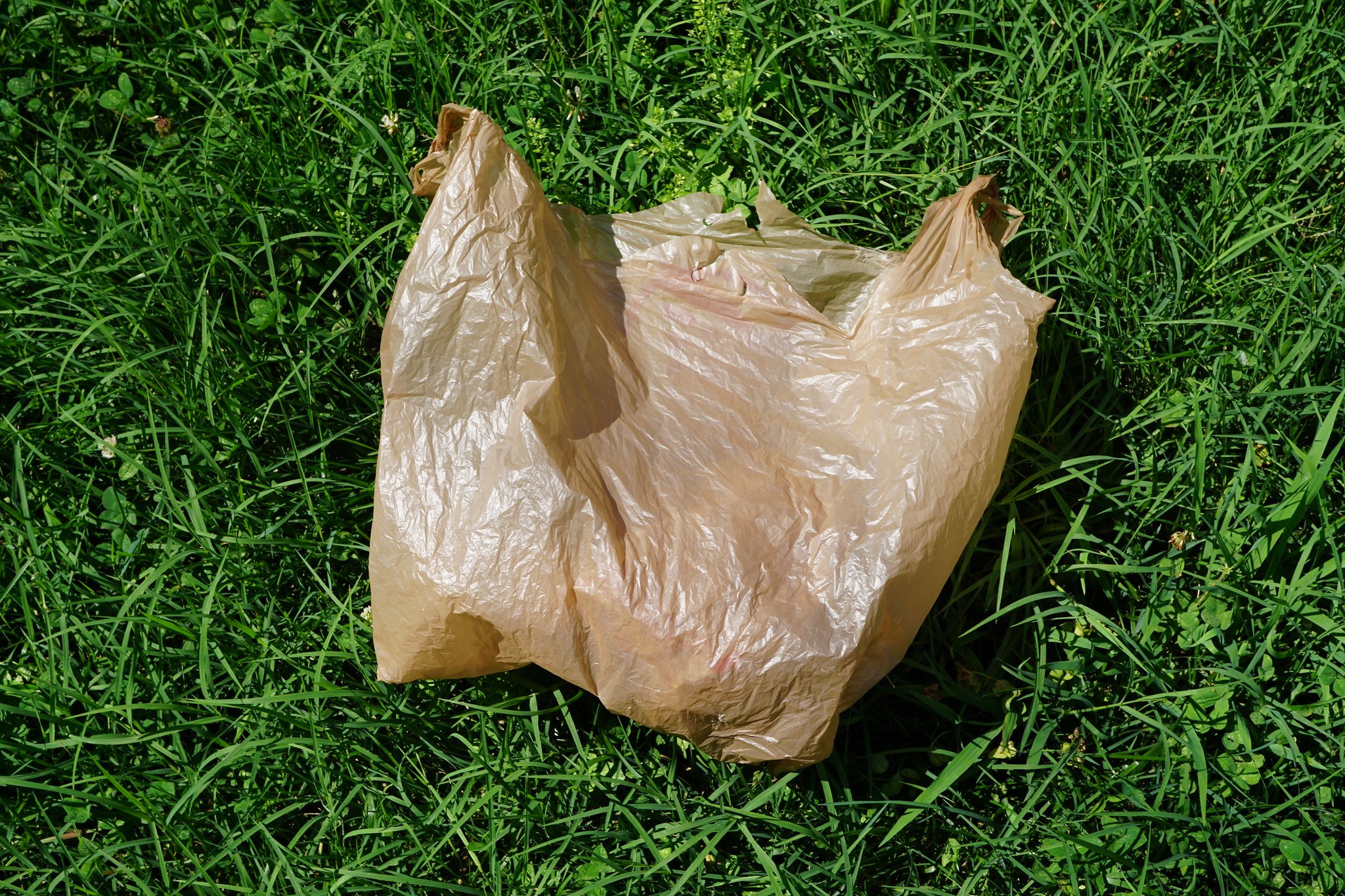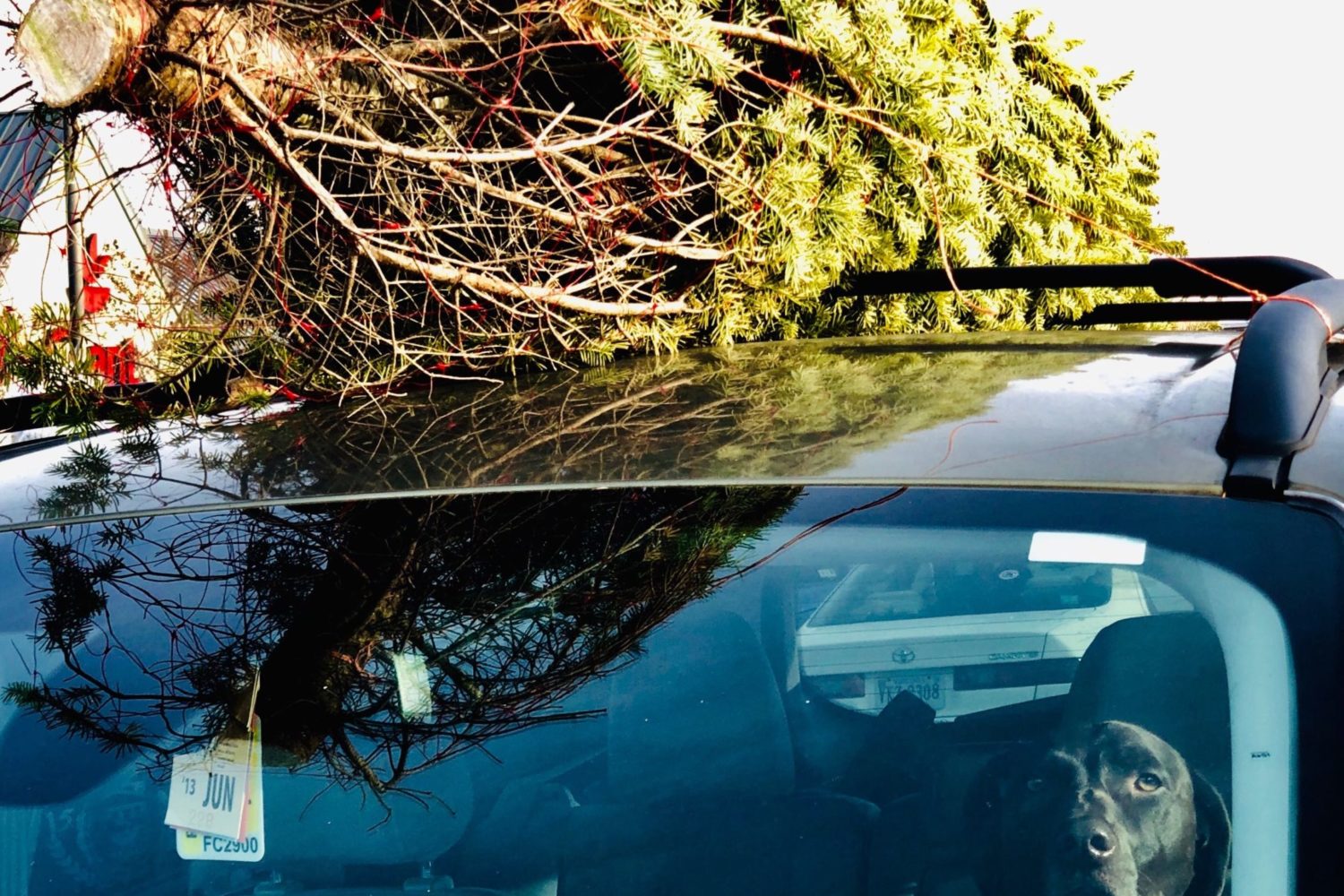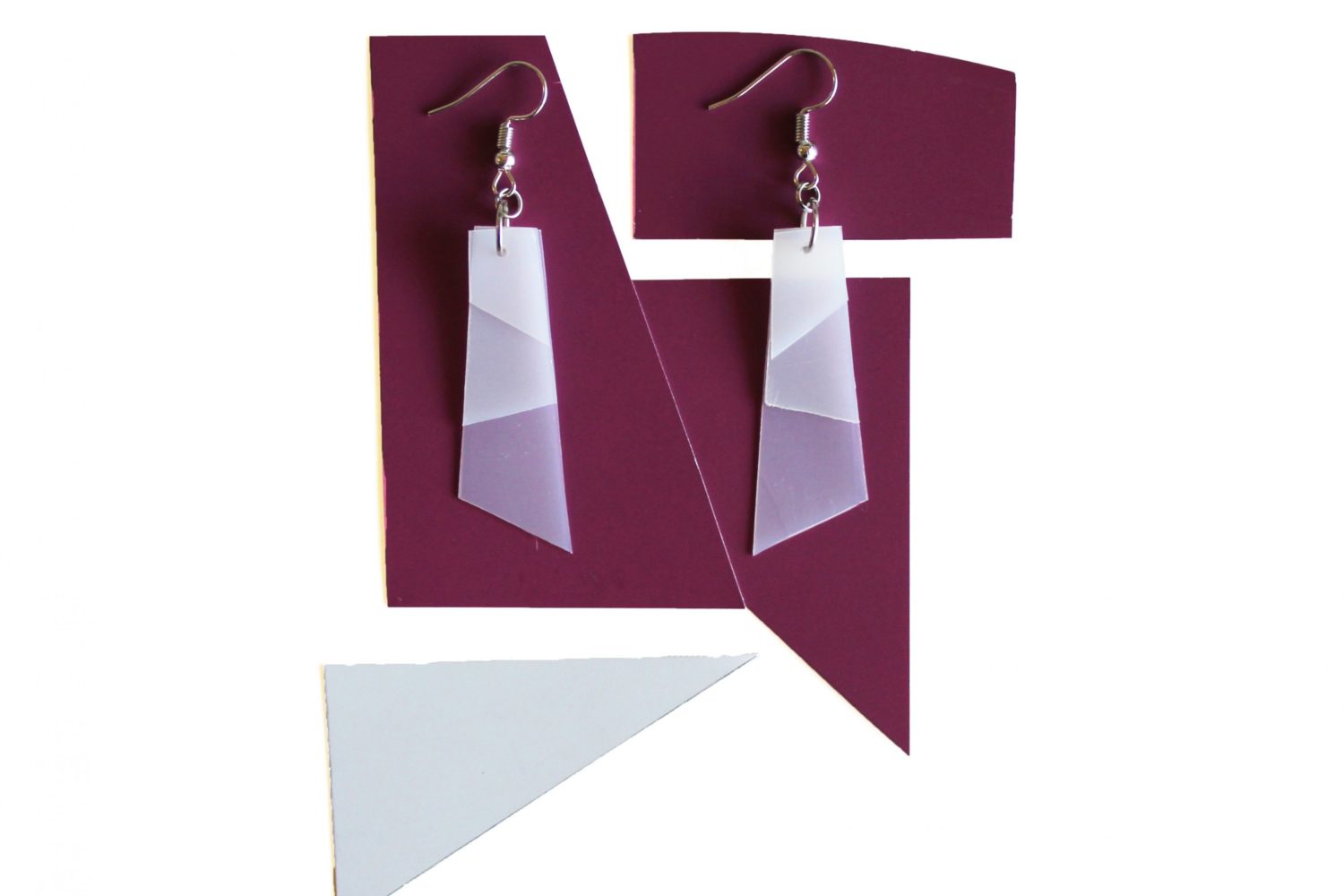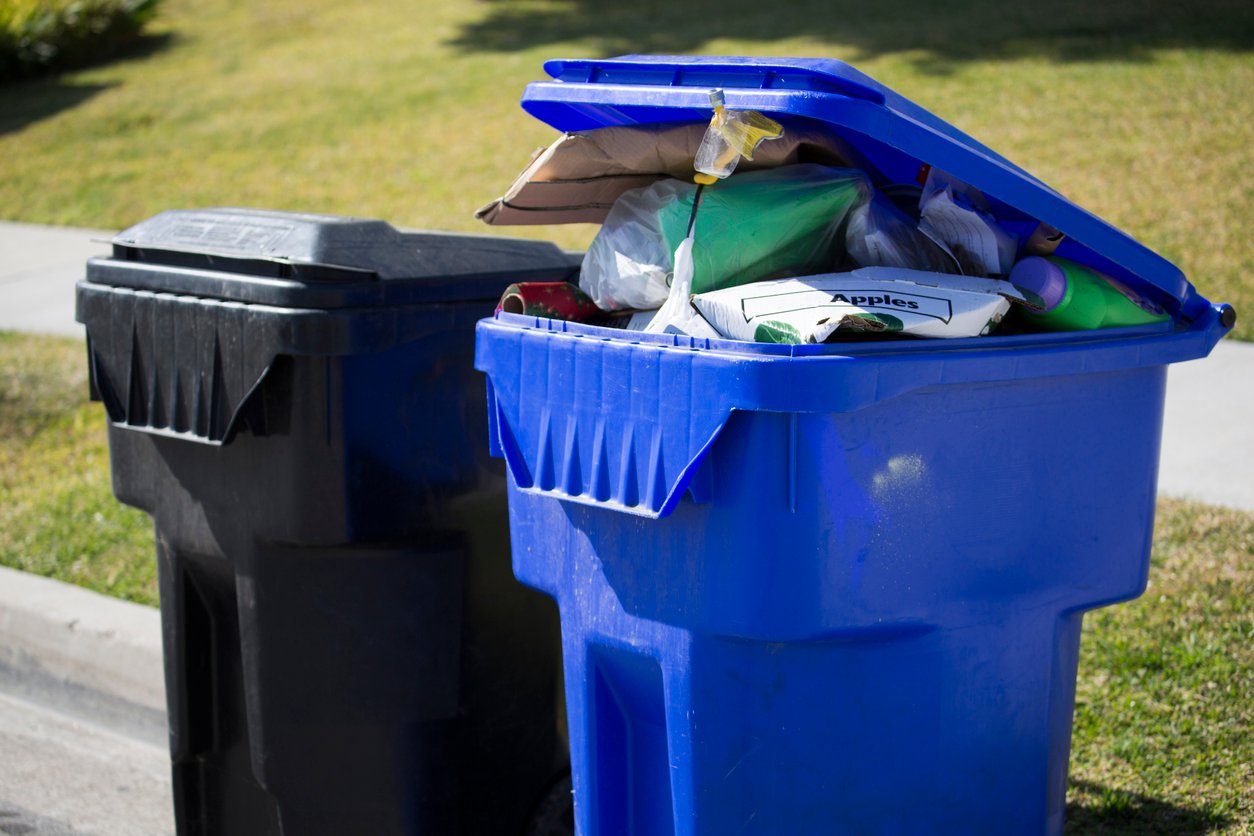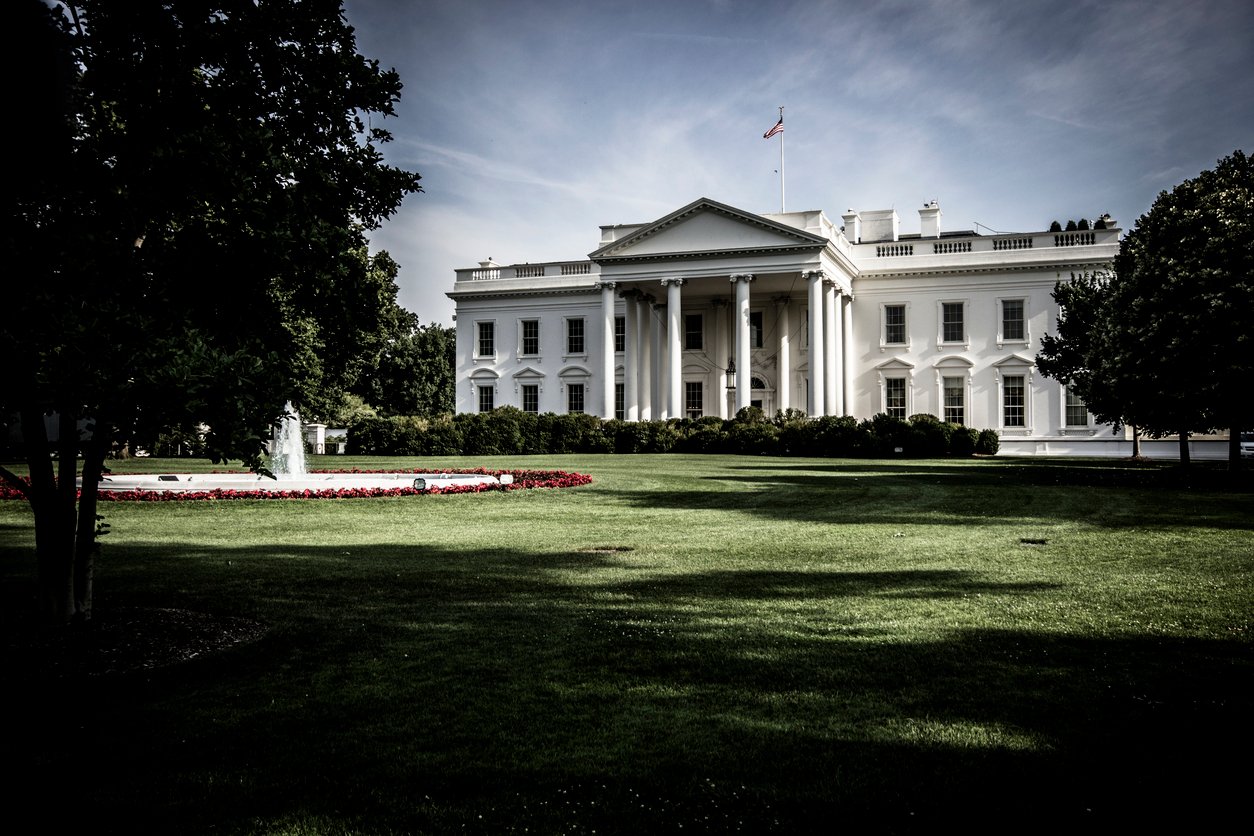Maybe you’ve faced this same dilemma: You have an item that’s come to the end of its life—say, a string of holiday lights—but you’re wavering between tossing the tangled mess into the trash (after all, it’s got all sorts of electronic bits) or the recycling (still, it has quite a bit of plastic).
There’s a person who can help you with that dilemma: Charlotte Dreizen.
If you follow a lot of DC accounts on Twitter, there’s a good chance some of her tweets have popped up on your timeline. Now director of sustainability and environment at the Plastics Industry Association but formerly with the city’s Office of Waste Diversion, the 28 year old knows all the ins and outs of the city’s recycling. It’s knowledge that she eagerly shares with her following, from helpful tips (i.e., remove the metal springs from soap pumps before recycling) to fun—and sometimes scary—facts (i.e., we throw away 81 percent of the newspaper we produce in DC).
“I would never have believed in a million years that so many people would be interested in recycling and curious about it and asking really thoughtful questions, unpacking why we can recycle this but not that and why can I recycle something in DC but not where I’m from,” says Dreizen, who started her account in 2018.
It’s trippy to realize that you’ve tweeted more than 7,000 tweets about recycling 😅
— Charlotte Dreizen (@CharDreizen) April 26, 2023
“One of the tough things is that we all have to figure out a binary answer of yes or no—should I put it in the bin or not?—when in reality, recycling is a much more nuanced thing,” says Dreizen. Complicating the matter, she says, is the fact that recycling policies are usually left up to local governments to decide, which makes rules inconsistent around the country.
The result? It can often be hard to keep track of what is and isn’t recyclable. That’s why we’ve asked the DC recycling guru to share her top tips for those who live in the District:
1. Don’t be the one who collects recyclables inside a plastic bag.
RIP to these recyclables placed into a plastic bag.
In virtually every community in the US, including DC, recyclables *cannot* be sorted and processed when in a plastic bag.
Plastic bags jam equipment and cause facilities to shut down (multiple times per day!) to cut them out! pic.twitter.com/E0pAn8jlLI
— Charlotte Dreizen (@CharDreizen) February 5, 2023
While gathering recyclables inside a plastic bag might seem like a logical way to reuse old plastic grocery bags, Dreizen says thin plastic film often gunks up the spinning conveyor machines that sort out recyclables. This applies to any thin plastic film, such as produce bags, Ziploc baggies, and the plastic coating used in paper towel packaging.
What should you do with thin plastics instead? Dreizen recommends taking them to a store drop-off where they’ll be sent to a facility that can process them. There are many drop-offs throughout DC, and this helpful tool can help you find the one nearest to you.
2. Avoid putting “tanglers” into home recycling.
Thin plastic films aren’t the only items that can jam up recycling facilities—we should also avoid putting stringy, rope-like items into curbside bins (hence, the answer to our holiday light dilemma). “That includes anything that can tangle around recycling equipment, such as garden hoses, wires, or cords,” says Dreizen, who calls these items “tanglers.”
When a tangler gets stuck in a machine, she says recycling facilities have to shut down the machine so workers can physically extract them with box cutters. “What other manufacturing industry has to shut down their operations to clean up gunk every other hour or so?” says Dreizen.
What should you do with these items instead? Dreizen says electronic “tanglers,” such as phone chargers, should go to electronic recycling programs. As for those notorious holiday lights, Dreizen says there are often seasonal drop-off programs around the city, such as at MOM’s organic market (which also accepts old phones and chargers too).
3. Leave all recyclables loose inside the bin.
Tbt to this perfectly lit, perfect bin of recyclables. Still thinking about it years later. pic.twitter.com/KCMOgHsPvn
— Charlotte Dreizen (@CharDreizen) February 23, 2023
This allows the machines to easily separate plastics from paper. “Ensuring that all items are being put loose into the recycling bin or in a paper bag where they’ll fall out during the process of being transported, sorted, and recycled is really important,” says Dreizen.
4. Flatten paper packaging and cardboard boxes.
The reason? According to Dreizen, machines in sorting facilities are designed to equate 2-D items with paper products and 3-D items with other materials.
“The very first piece of equipment at recycling facilities basically takes all 2-D items and it puts them aside onto a separate track where all paper items go, which is why all paper—whether it’s just loose leaf paper or junk mail or pizza boxes or an Amazon shipping box—all of those really need to be flat to ensure that they can successfully be pulled off by that first piece of equipment,” says Dreizen.
5. Don’t put items smaller than 2×2 inches into your home recycling.
“Anything that’s much smaller than that threshold is simply too small for the equipment to handle,” says Dreizen. But, because small things can add up, there are some other options, depending on the material.
“For example, shredded paper on its own can’t be recycled but if you put shredded paper into a paper bag and staple it shut, we can recycle that in DC (and many communities),” says Dreizen. “For small metal items like keys or nails, those would be good fits for scrap metal drop-offs [such as the I-66 transfer station] that are pretty ubiquitous nationwide and there are some in DC, too.”
6. Keep lids attached to containers.
This prevents the sorting machines from mistaking flat lids, such as those on containers of cream cheese, for paper. It also ensures that small plastic caps, like those on plastic milk jugs, don’t fall through the cracks of the machinery and get lost. That said, if the lid is made of a different material and larger than the 2×2 rule, you’ll want to separate them.
7. Don’t put old clothes into recycling.
If the clothes are beyond repair or unfit for donation, Dreizen recommends taking them to H&M, which has a clothing recycling program and will accept even non-H&M clothes. Beyond H&M and a few other private companies that take textiles, we unfortunately don’t have many textile recycling options, says Dreizen.
“We should really have publicly supported acceptable drop-offs for textile recycling, but that’s not something that we’ve tackled yet in DC,” says Dreizen.
8. Paper products that are coated in plastic on both sides (such as ice cream tubs) can’t be recycled.
Paper mills can’t process products like ice cream containers, which are coated in layers of glossy plastic on both the outside and inside. “There’s no recycling pathway whatsoever for these today,” says Dreizen. “The best pivot would be for a company to change the packaging format.” Other offenders: certain brands of oatmeal canisters, juice boxes, and single-use soup cups (like these).
What can we do as consumers? Put our purchasing power to use, says Dreizen, by choosing products that come in easily recyclable containers. Talenti gelato, for instance, comes in a pure PET tub, which is easy to recycle. You might also choose products that come in matte cardboard boxes rather than glossy. “I buy Sensodyne, not because my dentist tells me to, but because there’s not a glossy, glittery coating on it, which means the yield for paper recycling is higher and it’s less contaminating,” says Dreizen.
9. Don’t throw away single-use coffee cups—DC accepts them!
While no paper mills are able to process paper products that have layers of plastic on both sides, some can process paper products that are only coated on one side. The good news: “We have those kinds of facilities in our region,” says Dreizen, so go ahead and recycle your Starbucks and Dunkin’ cups. Just remember to separate the plastic lid from the paper cup.
“When you put it into a recycling bin together, the paper and plastic can’t get to his own stream,” says Dreizen. “This is one of the biggest sorting errors that I see on a day to day basis—people either throwing coffee cups into the trash or into the recycling bin but all in one unit and not separated.”
10. DC accepts pizza boxes.
RIP to this sweet little pizza box that just wanted to be recycled pic.twitter.com/wGMSr5YjVi
— Charlotte Dreizen (@CharDreizen) February 24, 2023
Lots of communities flat out refuse pizza boxes due to the amount of food contamination often found on them, but DC is game to accept them as long as they’re mostly clean. A little grease is fine but be sure to scrape off any melted cheese, says Dreizen.
11. Don’t “wish-cycle.”
Often, when we’re unsure of whether something is recyclable or not, we end up recycling it anyway—in the hopes that it is. Dreizen, who calls this “wish-cycling,” instead recommends erring on the side of caution and putting it in the trash, especially if you don’t have the time to do a little research on the item.
“It’s tough because it comes from such a good place,” says Dreizen. “A lot of people really want to do the right thing, but it can have some unintended consequences. Because contamination is such a serious issue in recycling, it’s always better to not risk a load of clean recycling by being that one household that’s throwing in a ton of stuff that you can’t actually process.”
That said, if you find yourself unsure but can’t stomach trashing an item, Dreizen loves fielding inquiries, as evidenced below:
Great question! Recyclable 💚 https://t.co/W86ynHlZzF
— Charlotte Dreizen (@CharDreizen) January 31, 2023
Great question! These are recyclable in DC 👌 https://t.co/Q3qKvnY6P5
— Charlotte Dreizen (@CharDreizen) February 1, 2023
Great question! The combo of paper and metal (lining and ends) would make this unrecyclable. https://t.co/61RufXBjUs
— Charlotte Dreizen (@CharDreizen) January 30, 2023
Plastic netting bags are not recyclable!
Unfortunately, they’re flexible plastic so wouldn’t be accepted in the curbside system and are not pure PE, so are not accepted in the store drop-off system. https://t.co/vqvSQcpRsM
— Charlotte Dreizen (@CharDreizen) January 29, 2023
You got it! Amazon has especially designed their paper-y tape to be compatible with the paper recycling stream. It’s a-okay to leave on! As is normal tape, which is not a problematic contaminant that paper mills can screen out easily. But, you could totally remove it, if desired. https://t.co/ly9ZAwSRe8
— Charlotte Dreizen (@CharDreizen) January 13, 2023
Laundry detergent bottles are made of high-value HDPE plastic and are R-E-C-Y-C-L-A-B-L-E
When ready to toss the bottle, no need to wash out any last drops. The soap actually helps plastic recyclers clean the material as it’s ground up and washed during the recycling process! pic.twitter.com/dToZU47Bt6
— Charlotte Dreizen (@CharDreizen) January 12, 2023
Envelopes are entirely recyclable! Their plastic windows are very easy for paper mills to screen out and remove, just like staples, and aren’t considered harmful contaminants. pic.twitter.com/45AsiEXmH1
— Charlotte Dreizen (@CharDreizen) January 10, 2023

